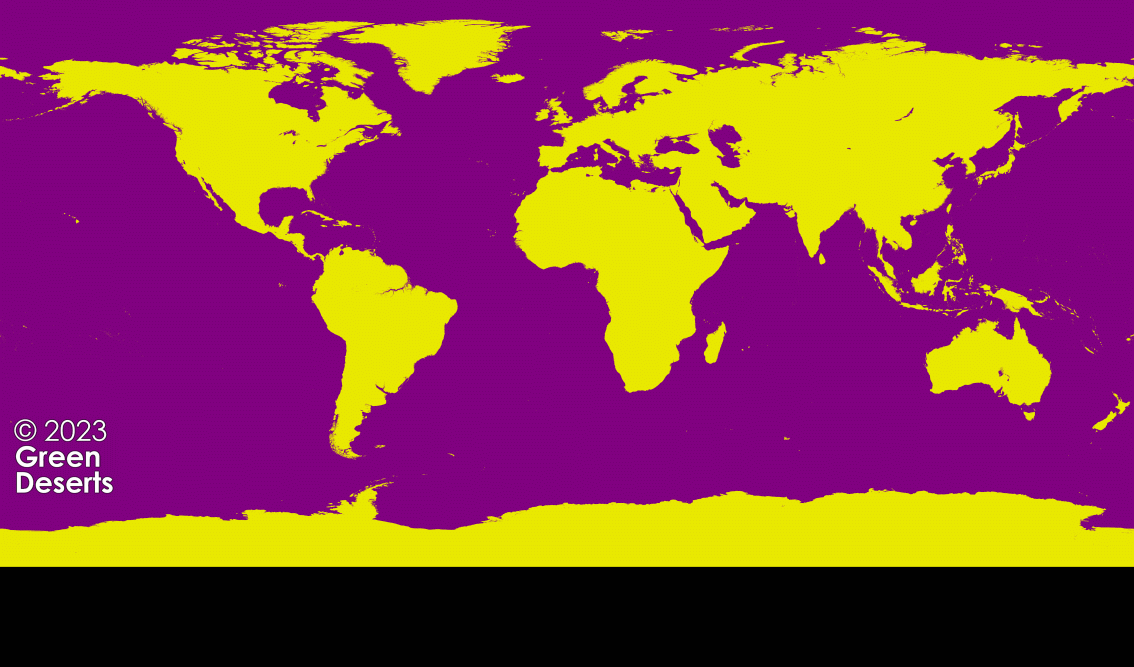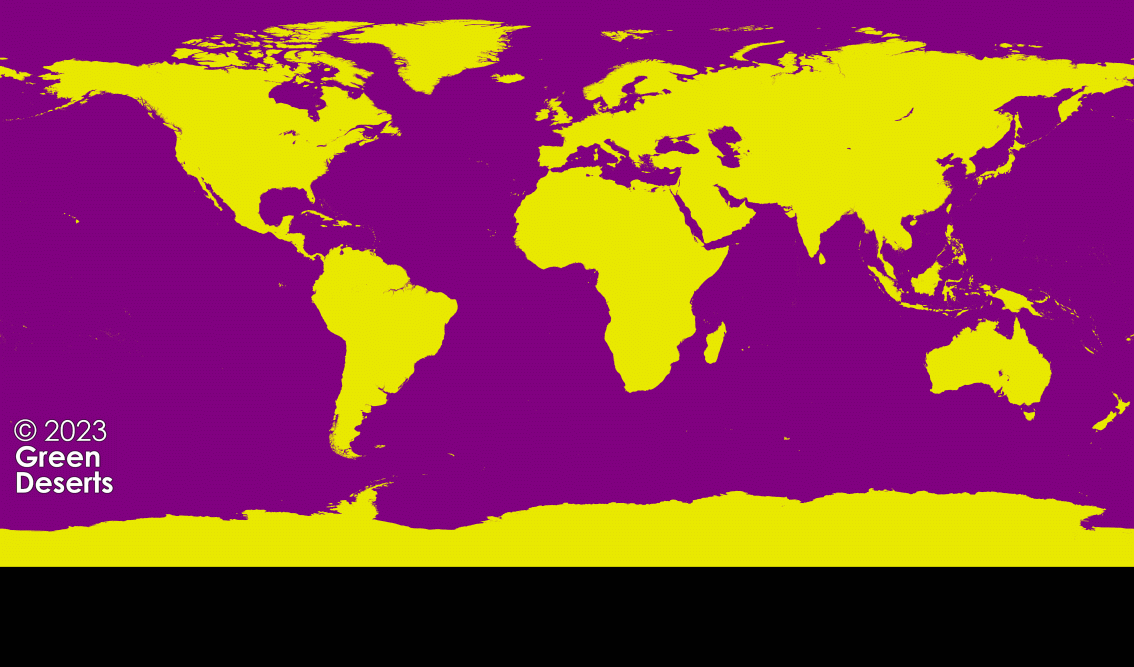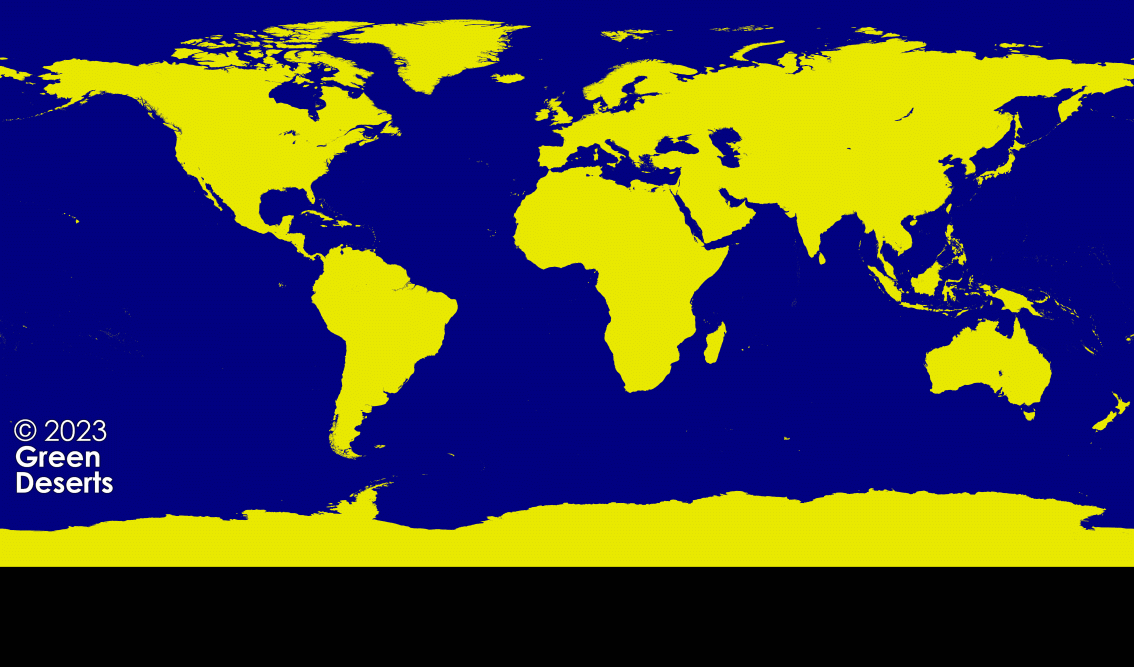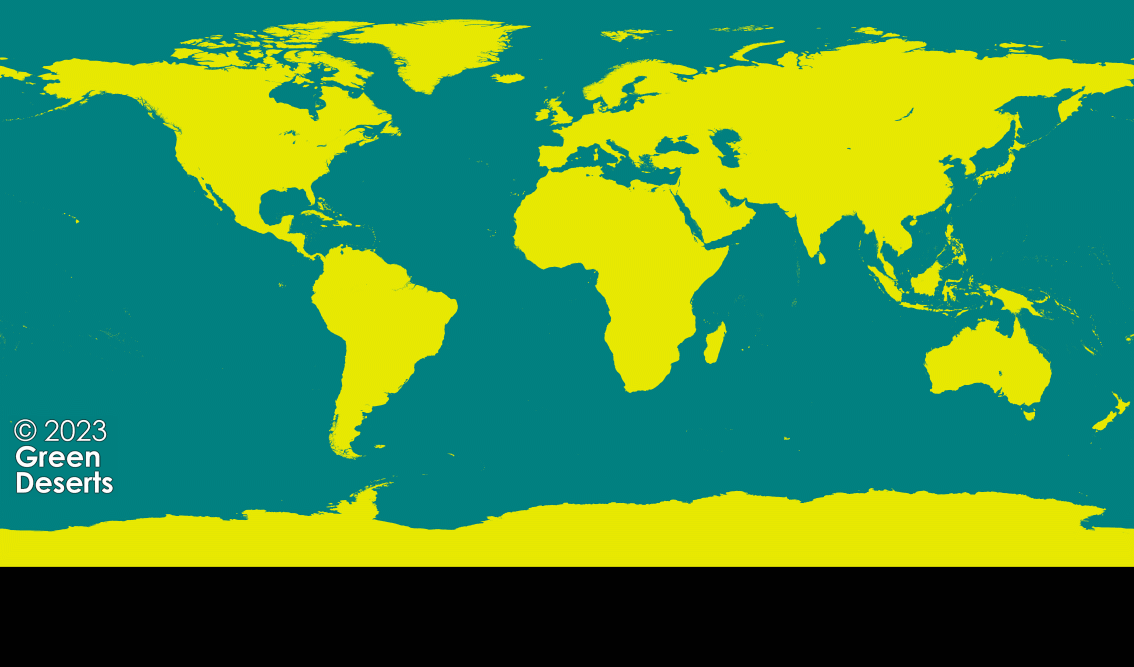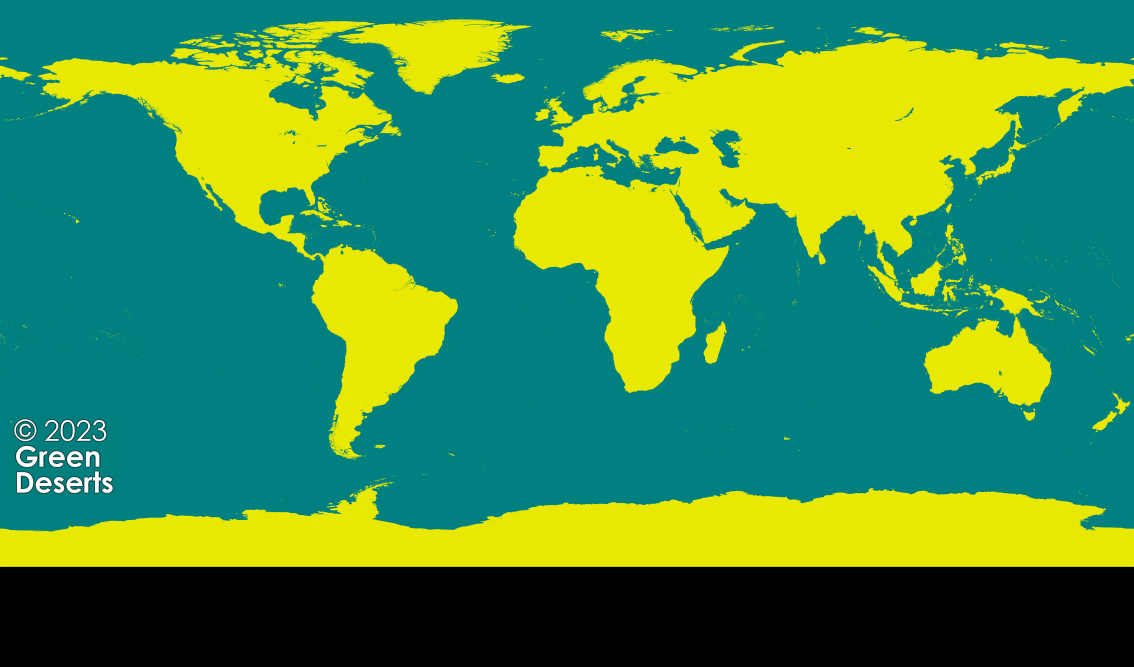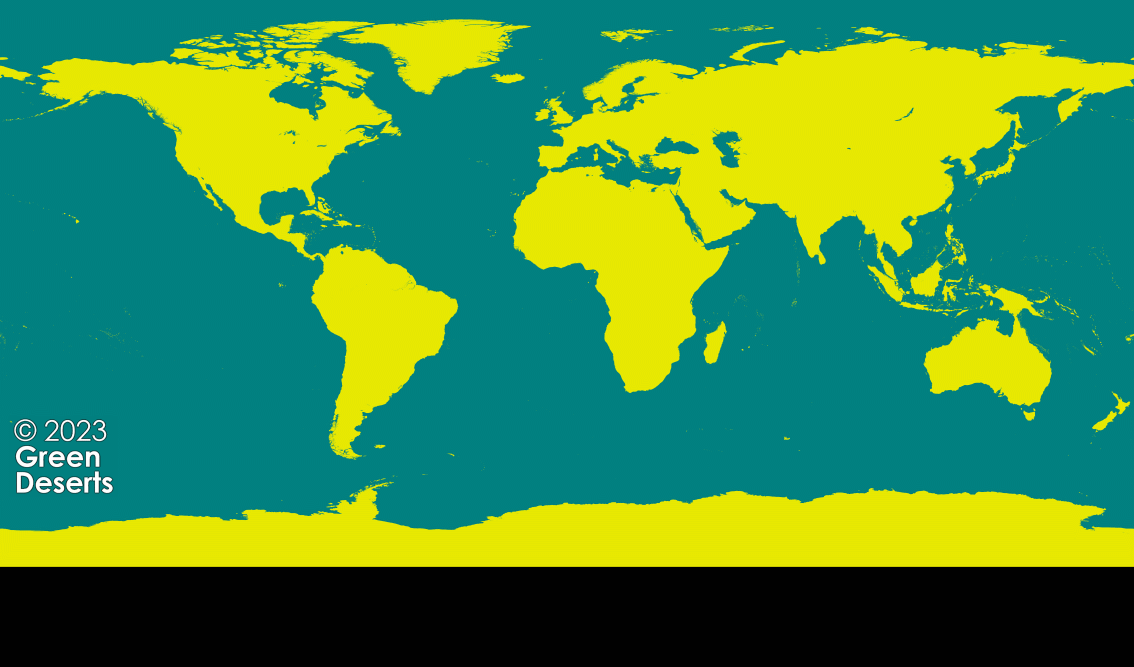If all the ice on land melts the sea level would be rising by 66 metres or 660 dm, respectively.
The sea surface has an area of about 362 million square kilometres or 36,200,000,000,000,000 square decimetres, respectively. Thus, the rising seas would contain an amount of water of 23,892,000,000,000,000,000 litres, or mm per square metre, respectively.
For simplicity, taking a 1,000 mm per sqm as a very high yearly rainfall in temperate regions, the melted ice could irrigate an area of 23,892,000,000,000,000 sqm.
For simplicity, think of a project period of 10 years. Then, this melted ice could irrigate an area of around 2.4 quadrillion sqm.
Or, 2,750 times the Sahara Desert ... for 10 years .. with 1,000 litres per sqm!
Thus, we do not 'need' the ice to melt off in order to turn the deserts into vegetated areas.
We only need 660 dm / 2,750 = 0.24 dm = 2.4 cm = ~ 1 inch.
So, instead of waiting for the 'frozen flood' why not taking this inch from today's sea level?
By this, we also would have an edge over the continuing melting off.
And we could start with 'de-desertification' right away.
And why not thinking a bit progressive? Why undertaking all the efforts to derive some new land from the seas when lowering the water level will prevail lots of new living space while saving most of the current shore lines at the same time?

